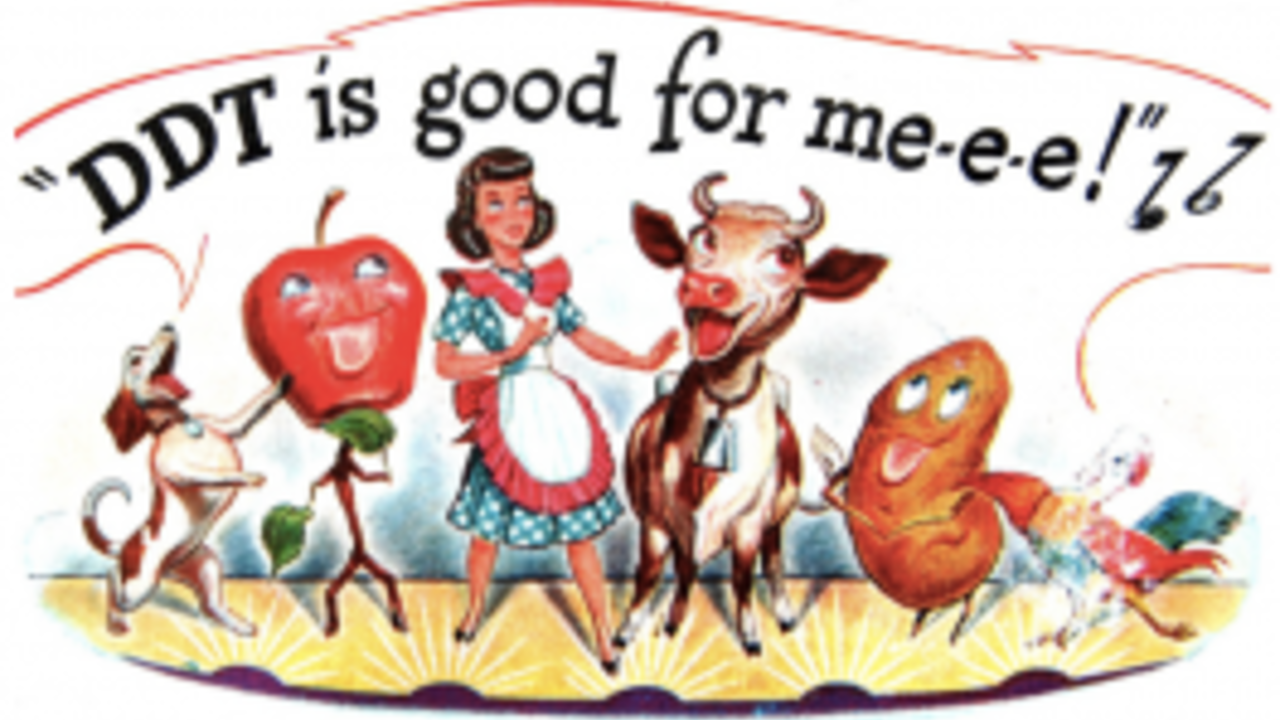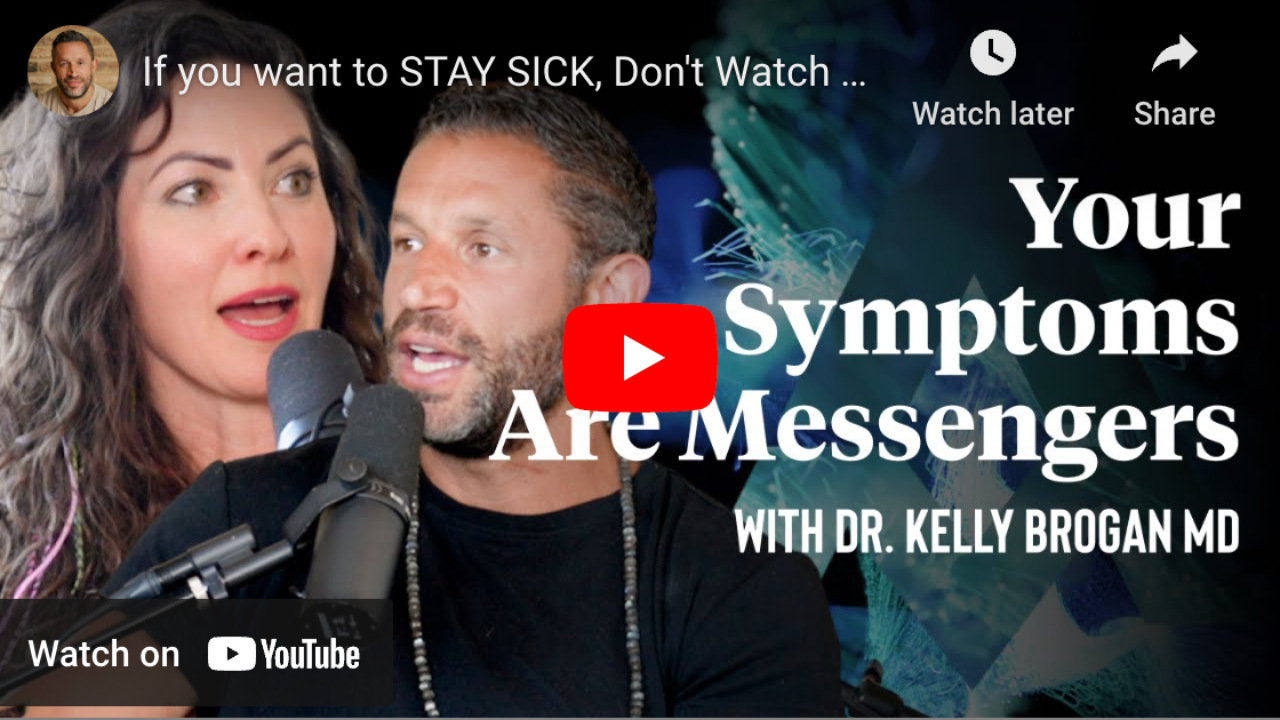What We Can Learn From DDT

“Those who fail to learn from history are doomed to repeat it” rings through my mind as I contemplate the platitudes being thrown around mass media regarding the safety of GMOs and vaccines. So many parents and otherwise thoughtful individuals are being led to believe that the “science is settled” and that those raising concerns are fear mongering conspiracy theorists.
What if we are just following a trail of evidence that supports the unassailable truth – nature knows best and cannot be outsmarted. This particular brand of hubris has led us far from our vital connection to the earth, the environment, and microbiota, but it has also forced the externalization of our trust.
Now, we wait for authorities and doctors to tell us what our bodies need, what poisons are good for them, and how unimportant nutrition, movement, and even spirituality are.
We have lost touch with that inner voice. So to those of you who still have that little Oprah-endorsed nagging feeling inside telling you something isn’t quite right today in the health arena, I’d like to shed light on what history can teach us about where we are today.
DDT Is Good For Meeee!
I have to believe that the truth ultimately triumphs, and that it is insuppressible in the long term. The time scale that we are talking about, however, remains unclear. I’ve written about the 17 year lag from publication of practice-condemning science to changes in the doctor’s office, and the 14 year lag from warnings about chemicals to action taken around their regulation. But what can we learn from one of the most egregious examples of latency to acceptance of toxicity: DDT.
An organochlorine pesticide, the discovery of which earned Dr. Paul Muller the Nobel Prize in 1948, DDT seemed like the clean and easy solution to mosquitos and all of the deadly diseases they traffic. My father grew up in NJ in the 50s and recalls running behind the spray of the trucks in the street (after playing with mercury beads in the dumpster!). The infamous ad campaign jingled, “DDT is good for me!”
After hundreds of millions had been exposed to DDT by 1970, there was still no discernible proof of human harm. In response to rising concern and Rachel Carson’s 1962 missive, thirty separate studies failed to find a link to breast cancer.
Sometimes referred to as the streetlight effect, if you are looking where it is easiest or most apparent to look, you are likely to miss the truth hiding in the less well-lit alley.
This observational bias is used to paper over signals of harm with study upon study that “disproves” and “reassures” leading to the science being “settled”.
With DDT, the science was settled according to prominent experts and the media. That is, until the right study was done. Conducted by epidemiologist Barbara Cohn, this study of 20,000 pregnant women and children collected from 1959-1976 looked at medical records 40 years later. Because this study accounted to the science of epigenetics, vulnerable windows of exposure, and the role of hormones in carcinogenesis, it was able to detect a five-fold increase in breast cancer in those exposed to DDT spraying before puberty. Their children were at increased risk of breast and testicular cancer as well.
In the steps of absolution, addicts are advised: when you are wrong, promptly admit it.
It’s ok to be wrong. Erring is part of science. It’s part of the discovery process around the good and evil of technology. Owning this fallibility is vital to the integrity of a process.
A powerful exploration of the warning that DDT’s history offers us for the suppression of science emerging on GMOs, states: “But what we do know is that it took us 62 years to even begin to “discern the injury” to humans caused by DDT?”
The DDT-Polio Connection
I’m going to connect one more dot to this story. Beyond cancer, might there have been human effects of DDT that relate to its persistence in the environment as a neurotoxin? DDT was banned in 1972, and began to be primarily exported after 1954. Why 1954? What’s significant about that date? It was in 1954 that the definition of Polio was changed to tighten up the criteria. According to Dr. Suzanne Humphries,
“In 1955, with the introduction of the vaccine, the criteria were changed include residual paralysis at both 10 to 20 days after onset of illness and again 50 to 70 days after onset….
This change in definition meant that in 1955 we started reporting a new disease as POLIO – paralytic poliomyelitis with a longer-lasting paralysis. Coxsackie virus infections and aseptic meningitis have since been distinguished from paralytic poliomyelitis. Prior to 1954 large numbers of these cases were mislabeled as paralytic poliomyelitis. So simply by changing diagnostic criteria, the number of paralytic cases was predetermined to decrease in 1955-1957, whether or not any vaccine was used.”
This means that the stage was set to attribute decreases in Polio to the newly introduced vaccine. This vaccine which is widely acknowledged to cause paralysis itself (called non- polio acute flaccid paralysis), to cause forced strain evolution of more virulent pathogens and to involve exposure to carcinogenic retroviruses like SV40 from animal tissue used in vaccine preparation. The pathogenic straw man, the wild polio virus itself is an exceedingly rare cause of paralysis. In only 3% of infections does virus gain entry to the central nervous system, and then, in only 1-5 in 1000 cases does the infection progress to paralytic disease. It is transmitted via fecal-oral contact, obviously minimized in the setting of hygienic practices.
I’d love to believe that DDT was banned because our protectorate government agencies were exercising the precautionary principal. Unfortunately, Jim West tells a different and far more compelling story. He suggests that Polio virus has been used as a pawn to allow the vaccine program to take credit for the damage done by the chemical industry. He states:
“A clear, direct, one-to-one relationship between pesticides and polio over a period of 30 years, with pesticides preceding polio incidence in the context of the CNS-related physiology just described, leaves little room for complicated virus arguments, even as a cofactor, unless there exists a rigorous proof for virus causation.”
Here is some visual evidence of this relationship, from his article for the Weston A Price Foundation:

West surfaces the work of Dr. Morton S. Biskind who stated:
“Central nervous system diseases (CNS) such as polio are actually the physiological and symptomatic manifestations of the ongoing government- and industry-sponsored inundation of the world’s populace with central nervous system poisons.”
In this case, what we have been calling polio may have been anything but, and a focus on germ theory over environmental medicine helped obscure the truth and perpetuate a billion dollar agenda that capitalizes on a now ingrained fear of polio and other germs, by extension.
War With Nature
Unfortunately, we’re not going to win this one, folks. We’re not going to kill all the pests and weeds and bacteria and viruses without also killing and maiming ourselves in the process. As Dubos said, “Man will ultimately destroy himself if he thoughtlessly eliminates the organisms that constitute essential links in the complex and delicate web of life of which he is a part.” The complexity of the ecosystem, of our role in the environment is an elegant, magnificent thing that our ancestors had fierce regard for.
Whether it’s GMO and pesticide technology, antibiotics and vaccines, or industry chemicals, we have to begin to see these patterns, connect these dots, and wake up to the very dire consequences of interfering with the natural world to this extent. Even if we are being told that there are no consequences.
“ If you look closely you’ll see the exact same concerns: the violation of informed consent, the neglect of the precautionary principle, predominance of industry propaganda over actual science, the revolving door between government regulators and legislators and industry, and the undermining of the fundamental right of bodily self-possession, the keystone of health freedom.” -http://www.greenmedinfo.com/blog/anti-gmo-pro-vaccine
Want to continue reading?
Enter your details below to read more and receive updates via email.









